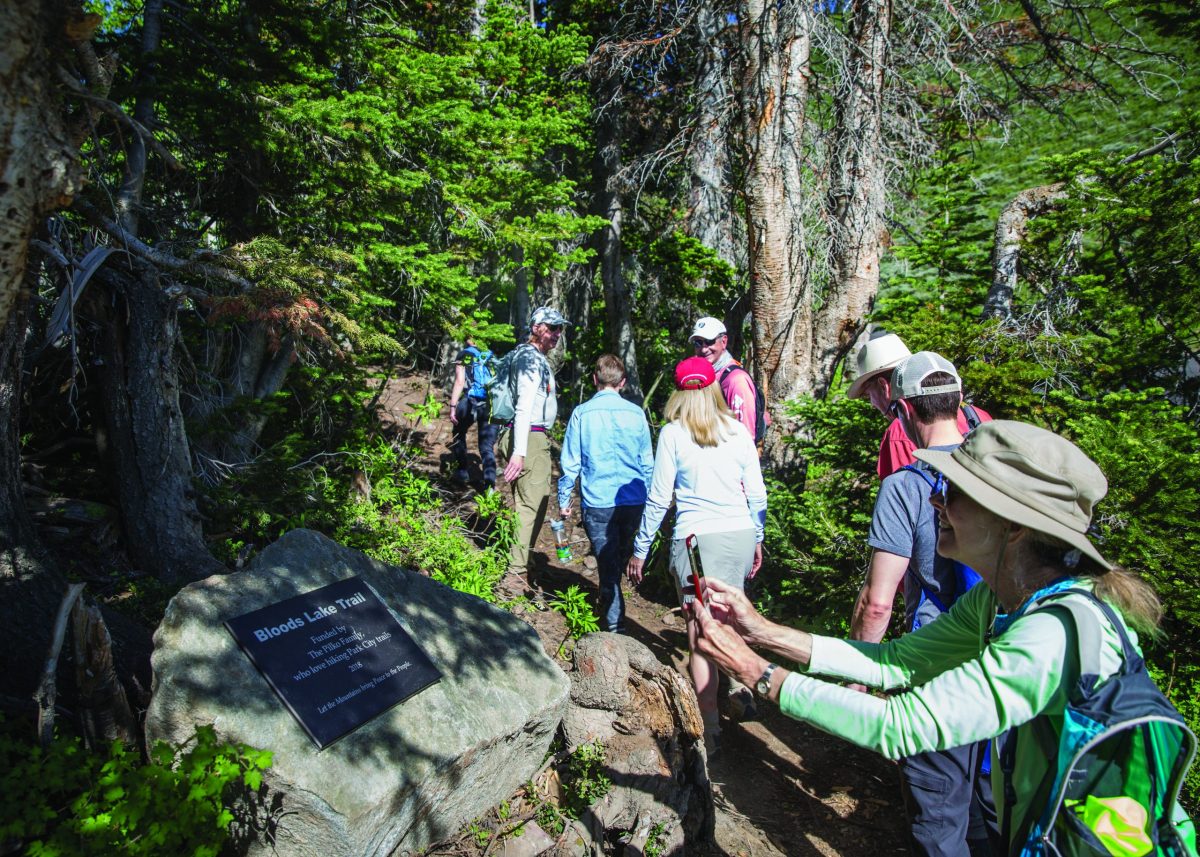The Park City area’s trail system might be getting too big for its own good.
Reports of conflicts on the trails seem to be occurring more often as more people take advantage of what has long been a local source of pride: a trail network hundreds of miles long that twists along hills, ridges and valleys.
While the trails have long been popular, usage seemed to explode during the early months of the pandemic and does not seem to have abated.
Anecdotes abound about hikers and bikers from the Salt Lake Valley — and recent Park City transplants — arriving to local trailheads by the droves, crowding trails and leaving bags of dog poop for others to clean up.
Hard data, however, is not readily available to measure year-over-year trail use.
The Snyderville Basin Recreation District and the Mountain Trails Foundation manage much of the trails in the area, with Basin Rec controlling trails mostly in the Basin and Mountain Trails overseeing those in Park City proper.
The Summit County Council started to look seriously at trail overcrowding issues after it heard in 2019 that cars parked on the side of the road near popular trail- heads could pose access issues for emergency vehicles.
The issue was compounded by tales of tailgaters enjoying post-ride beverages on private property.
At a County Council meeting in April, Councilor Roger Armstrong urged Basin Rec officials to diagnose the problem and find remedies for it.
“I do have an obligation to have a conversation with some of you if they say somebody is barbecuing on my front lawn, literally,” he told Basin Rec officials.
To address the problem, Basin Rec hired enforcement officers, marked more than 10,000 feet with “no parking” signs and issued hundreds of parking tickets, mostly around Rob’s Trail in Sun Peak and in Summit Park.
“No parking” signs have also been posted on Guardsman Pass, another busy area with packed trailheads.
But the parking issues are only one aspect of the problem. Finding seclusion on the trails is becoming harder, as well, with hikers and mountain bikers having to co-exist on narrow trails while moving at very different speeds.
Private van shuttles can often be seen with a dozen or more bikes strapped to their roofs or back windows taking riders from the Salt Lake Valley to the Park City ridgeline.
Recently, Park City has started a free transit shuttle people to some of those same trailheads to try to alleviate parking issues.
There is a sense that users from the Salt Lake Valley are at the root of the overcrowding issues, coming up Parleys Canyon to take advantage of an amenity Park City-area residents pay for. Voters in Park City and the Snyderville Basin have voted to tax themselves for trails and open space bonds worth nearly $200 million since 1995.
During a public hearing for a Basin Rec tax increase in 2019, many people asked why officials couldn’t charge people from the Wasatch Front to use the trails.
One idea is to send out annual trail permits with the property tax bills that go to the areas that help pay for the system. Officials have repeatedly said that trying to enforce such a permit system would cost more than any proceeds.
Still, in June, Summit County Councilor Doug Clyde said that a permitting system is almost inevitable.
“We are providing trail service on our nickel — on the county’s residential owners’ nickel — to the entirety of the Salt Lake Valley,” he said. “… I think that it will become absolutely necessary for us to control trail access by permits in the future.”
Basin Rec officials say that might create more problems, with users attempting to skirt the regulations by parking away from the more well-trafficked trailheads, leading to more conflicts at neighborhood trailheads.
For years, county planning officials have required developments to build trails and tie in to the local trail network. Officials are now hearing that the once-quiet neighborhood trailheads are becoming quite popular.
Basin Rec officials say the ultimate goal is to make it possible to access trails without using a car. They envision a shuttle system that can drop hikers or bikers in the middle of the trail network, allowing the users a more secluded trail experience and alleviating trailhead conflicts.
That solution is apparently years away if it comes at all.
In the meantime, Basin Rec officials have said they will concentrate on instituting directional trails and will slow down on building new trails to work on the necessary infrastructure to support the existing stock.

